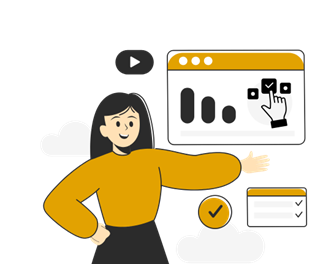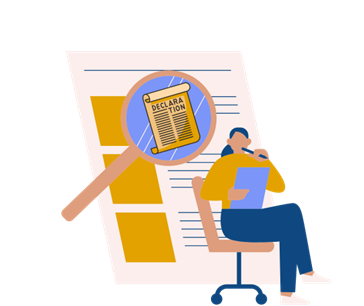Selecting the right Human Resource Management (HRM) software can transform how your business operates. Whether you're a startup scaling rapidly or an established company seeking efficiency, understanding what to expect from modern HRM systems helps you make informed decisions. Today's HRM solutions go far beyond simple employee record keeping, offering comprehensive tools that streamline operations, enhance employee experience, and drive business growth.
The landscape of HR technology has evolved dramatically. What once required multiple disconnected systems can now be managed through integrated platforms that handle everything from recruitment to retirement. But with countless options available, knowing what features truly matter for your organization becomes crucial.
Core Features Every HRM Software Should Provide
-
Employee Information Management
Modern HRM software should serve as a comprehensive digital repository for all employee data. This goes beyond basic contact information to include employment history, skills assessment, certifications, and performance records.
- Centralized employee database with secure access controls
- Document storage for contracts, certifications, and compliance records
- Employee self-service portals for updating personal information
- Organizational charts and reporting structures
- Integration with background verification systems
-
Attendance and Time Tracking
Accurate time tracking forms the foundation of payroll processing and productivity monitoring. Expect sophisticated attendance management that adapts to modern work patterns including remote work, flexible schedules, and multiple shift operations.
- Multiple clock-in methods including biometric, mobile app, and web-based options
- Real-time attendance monitoring with automated alerts for tardiness or absences
- Flexible shift management supporting rotating schedules and overtime calculation
- GPS-enabled mobile attendance for field employees
- Integration with access control systems and security protocols
-
Leave Management System
Efficient leave management reduces administrative burden while ensuring proper coverage and compliance with labor regulations. Modern systems should handle complex leave policies with automated workflows.
- Customizable leave types with accrual rules and carry-forward policies
- Automated approval workflows with manager notifications
- Leave balance tracking with real-time updates
- Holiday calendar management with location-specific considerations
- Absence planning tools to prevent understaffing
-
Payroll Processing and Management
Payroll functionality should seamlessly integrate with attendance data while handling complex salary structures, deductions, and compliance requirements. Expect automation that reduces errors and saves time.
- Automated salary calculation with overtime, bonuses, and deduction processing
- Tax computation and compliance with local regulations
- Payslip generation with employee self-service access
- Integration with banking systems for direct deposits
- Year-end reporting and tax document generation
-
Performance Management Tools
Comprehensive performance management helps organizations develop talent while maintaining accountability. Look for systems that support continuous feedback rather than annual reviews alone.
- Goal setting and tracking with measurable objectives
- Regular feedback cycles and peer review capabilities
- Performance analytics with trend identification
- Development planning and skill gap analysis
- Recognition and reward program integration
-
Recruitment and Onboarding
Modern HRM systems should streamline the entire employee lifecycle from job posting to productive team member. Expect tools that enhance candidate experience while reducing time-to-hire.
- Job posting across multiple platforms with automated distribution
- Applicant tracking with resume parsing and screening tools
- Interview scheduling with calendar integration
- Digital onboarding workflows with document collection
- New hire integration with IT and facilities management
Advanced Features to Look For
Beyond core functionality, modern HRM software offers advanced capabilities that provide competitive advantages. These features separate basic systems from comprehensive solutions that drive business success.
| Feature Category | Key Capabilities | Business Impact |
|---|---|---|
| Analytics and Reporting | Real-time dashboards, predictive analytics, custom reports | Data-driven decision making, trend identification |
| Employee Self-Service | Mobile apps, document access, request submissions | Reduced HR workload, improved employee satisfaction |
| Compliance Management | Automated updates, audit trails, regulatory reporting | Risk reduction, legal protection |
| Integration Capabilities | API access, third-party connectors, data synchronization | Ecosystem efficiency, reduced data silos |
Security and Compliance Standards
Data security cannot be an afterthought when dealing with sensitive employee information. Expect enterprise-grade security measures that protect both personal data and business intelligence while maintaining usability.
Your HRM software should implement multi-layered security protocols including encrypted data transmission, secure password policies, and role-based access controls. Regular security audits and compliance with international standards like ISO 27001 demonstrate a vendor's commitment to data protection.
Additionally, look for systems that provide detailed audit trails, allowing you to track who accessed what information and when. This transparency becomes crucial during compliance reviews or security investigations.
User Experience and Accessibility
The best features mean nothing if employees and managers struggle to use the system. Modern HRM software should prioritize intuitive design with minimal learning curves. Expect responsive interfaces that work seamlessly across desktop computers, tablets, and smartphones.
Consider systems that offer customizable dashboards allowing users to focus on information most relevant to their roles. Managers might prioritize team performance metrics, while individual employees focus on leave balances and payroll information.
Implementation and Support Expectations
Successful HRM software deployment requires more than just purchasing a license. Expect comprehensive implementation support including data migration assistance, user training programs, and ongoing technical support.
Quality vendors provide dedicated implementation teams that understand your business requirements and can configure the system accordingly. They should offer multiple training formats including online tutorials, live sessions, and documentation that helps users maximize system benefits.
Post-implementation support becomes equally important. Look for providers offering multiple support channels with reasonable response times. Systems like Zeba Pro demonstrate this commitment with their promise of one-hour response times during business hours and 24/7 support availability.
Scalability and Future-Proofing
Your chosen HRM system should grow with your organization. Whether you're planning to double your workforce or expand into new markets, the software should accommodate these changes without requiring complete system overhauls.
Cloud-based solutions typically offer better scalability options compared to on-premise systems. They can handle increased user loads, additional features, and geographic expansion more efficiently. Consider how the pricing model scales with your growth to avoid unexpected cost spikes.
Cost Considerations and ROI
While cost shouldn't be the only factor, understanding the total cost of ownership helps set realistic expectations. Beyond licensing fees, consider implementation costs, training expenses, ongoing maintenance, and potential customization requirements.
Calculate potential return on investment by estimating time savings from automated processes, reduced compliance risks, and improved employee satisfaction. Many organizations find that comprehensive HRM systems pay for themselves within the first year through efficiency gains alone.
Industry-Specific Requirements
Different industries have unique HR requirements that generic systems might not address adequately. Manufacturing companies need robust shift management and safety compliance tracking. Healthcare organizations require credential management and complex scheduling capabilities.
Evaluate whether your chosen system can handle industry-specific workflows, reporting requirements, and compliance standards. Some vendors offer specialized modules or configurations tailored to particular sectors.
Making the Right Choice
Selecting HRM software requires careful evaluation of your current needs and future goals. Start by documenting your existing HR processes, identifying pain points, and defining success metrics. This foundation helps you evaluate vendors objectively rather than being swayed by impressive demonstrations that don't address your specific requirements.
Request demonstrations using your actual data scenarios rather than generic examples. This approach reveals how well the system handles your unique situations and workflow complexities.
Consider conducting pilot programs with shortlisted vendors. Many organizations benefit from testing systems with small user groups before full deployment. This strategy identifies potential issues early while building internal expertise that supports successful implementation.
Conclusion
Modern HRM software represents a significant investment in your organization's future efficiency and employee satisfaction. By setting appropriate expectations and thoroughly evaluating options, you can select a system that not only meets current needs but positions your organization for sustained growth.
Remember that the best HRM software combines robust functionality with excellent user experience, strong security, and reliable support. Take time to understand what different systems offer, how they align with your business processes, and what kind of partnership you can expect from the vendor.
The right choice will transform your HR operations from administrative burden to strategic advantage, freeing your team to focus on activities that directly contribute to business success and employee development.
When you're ready to experience what comprehensive HRM software can deliver, Zeba Pro offers a complete HRMS solution designed specifically for growing businesses. From automated attendance tracking to seamless payroll processing, Zeba Pro delivers the features and support you need to transform your HR operations and drive business success.
Rohit Kumar
Published on June 27, 2025






